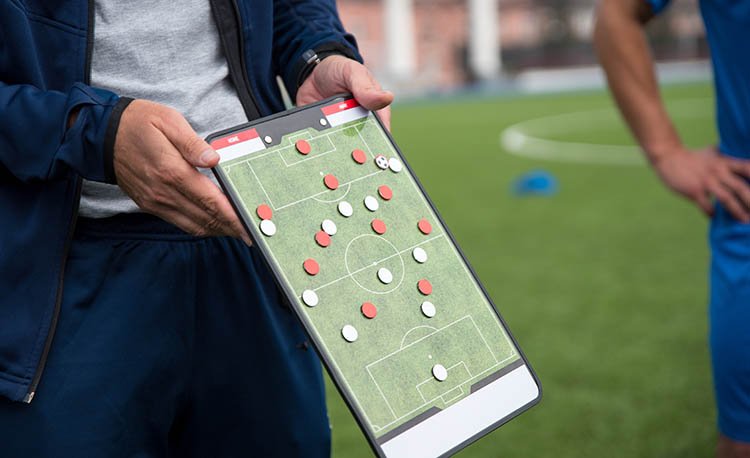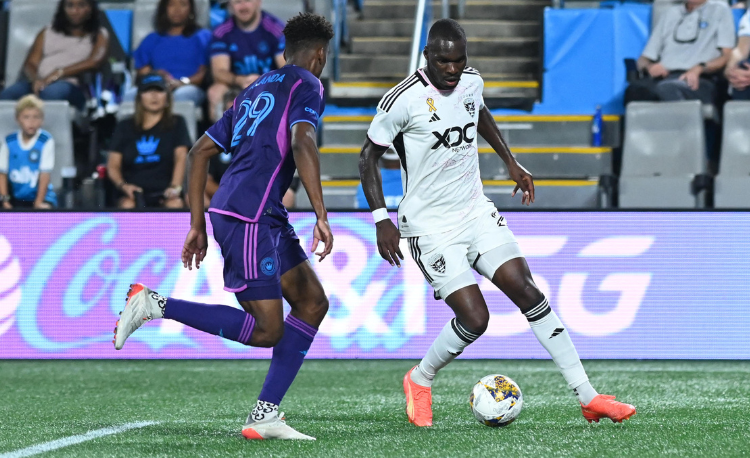5 ways to be a colour-blind friendly coach
From choosing the right balls and cones to using more inclusive words on the field, Ryan Davies provides tips on avoiding issues around colour confusion.
As a coach, player, parent or fan, matchday is the most exciting day of the week.
Except when it arrives, there is sometimes a big problem - the two teams are wearing the same kit. At least that is what it may look like to some of those on the pitch and in the stands.
Why? Because they, like more than 300 million other people worldwide, may be colour blind. In fact, 1 in 12 males and 1 in 200 females have some degree of colour vision deficiency (CVD). Statistically, that’s at least one in every male squad, in every team across the globe.
Being able to distinguish between the two teams, see the ball clearly and recognise where the pitch boundaries lie is, of course, fundamental to the experience enjoyed by everyone involved in our wonderful game.
So, as coaches, what can we do to ensure that those with CVD - whether they are aware they have the condition or not - don’t experience challenges which may affect their enjoyment or performance. Here are my five suggestions...
01 - AVOID COLOUR-BLIND KIT CLASHES
The biggest challenge for any player with CVD is distinguishing between their own team and the opposition.
Try to avoid common colour-blind kit and bib clashes in matches and training such as Red v Green, Blue v Purple or Yellow v Orange. Blue v Yellow or White is the most colour-blind friendly option.
02 - USE CVD FRIENDLY PITCH AND LINE MARKINGS
Marking out clear playing areas in training are vital to the success of your practice.
However, these zones may be hard to see for players with CVD, so try not to use red or orange cones on a green surface. Yellow and white cones will provide the biggest contrast to a grass pitch.
Be aware that red line markings on a green surface will be invisible to the majority of colour-blind players.
03 - THINK ABOUT YOUR CHOICE OF BALLS
There is now a wonderful array of coloured balls to choose from when purchasing your equipment for the new season.
Unfortunately, some of these balls - such as reds or oranges - may be extremely difficult to pick out against the green grass, especially from a distance.
A traditional white ball or bright yellow one will be much easier for colour-blind players to see.
04 - CONSIDER DELIVERY OF TEAM TALKS AND TACTICS
Players with CVD may struggle to follow instructions involving colours during team- talks and training sessions.
When using coloured pens and markers on tactics and white boards, aim to distinguish between teams using different shapes - e.g. triangles v circles. Try to avoid using phrases with colour as a sole reference, such as “stand behind the red cone”.
Adding numbers or symbols to cones and markers is useful in giving players another point of reference.
05 - CHECK WHAT THE REFEREE IS WEARING
As well as clashes with the opposition, kits can often clash with the referee. For those with some form of colour blindness, a dark red or navy strip will appear extremely similar to that of a referee, if they are wearing black.
Keeping these simple principles in mind on match and training days will have a significantly positive impact on the experience of all those with CVD.
Ultimately, and most importantly, it will ensure that - colour blind or not - every single player can concentrate on trying to score a last-minute winner and not worrying about the colour of their kit.
Related Files
Newsletter Sign Up
Coaches Testimonials

Gerald Kearney, Downtown Las Vegas Soccer Club

Paul Butler, Florida, USA

Rick Shields, Springboro, USA

Tony Green, Pierrefonds Titans, Quebec, Canada
Subscribe Today
Discover the simple way to become a more effective, more successful soccer coach
In a recent survey 89% of subscribers said Soccer Coach Weekly makes them more confident, 91% said Soccer Coach Weekly makes them a more effective coach and 93% said Soccer Coach Weekly makes them more inspired.
*includes 3 coaching manuals
Get Weekly Inspiration
All the latest techniques and approaches
Soccer Coach Weekly offers proven and easy to use soccer drills, coaching sessions, practice plans, small-sided games, warm-ups, training tips and advice.
We've been at the cutting edge of soccer coaching since we launched in 2007, creating resources for the grassroots youth coach, following best practice from around the world and insights from the professional game.






